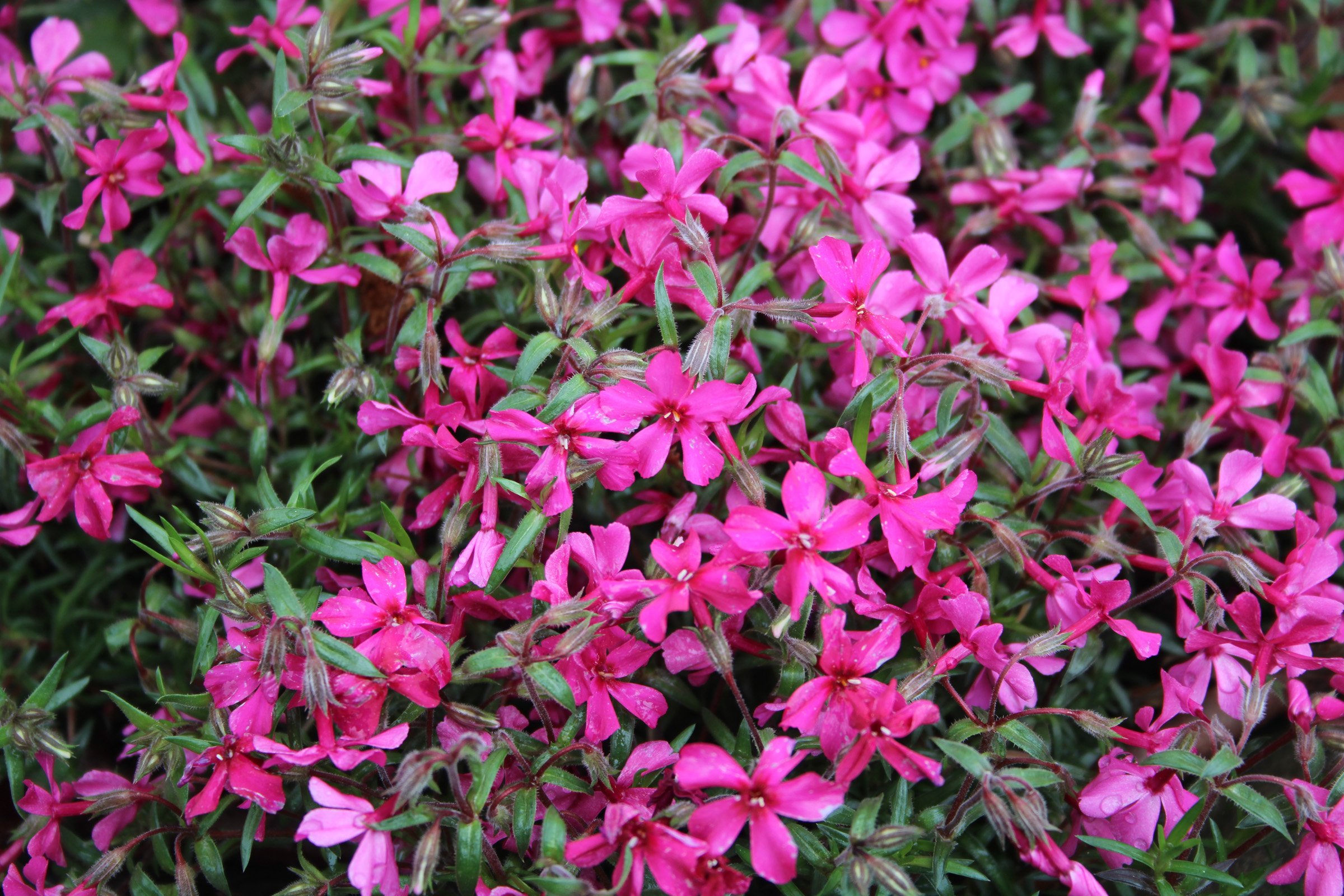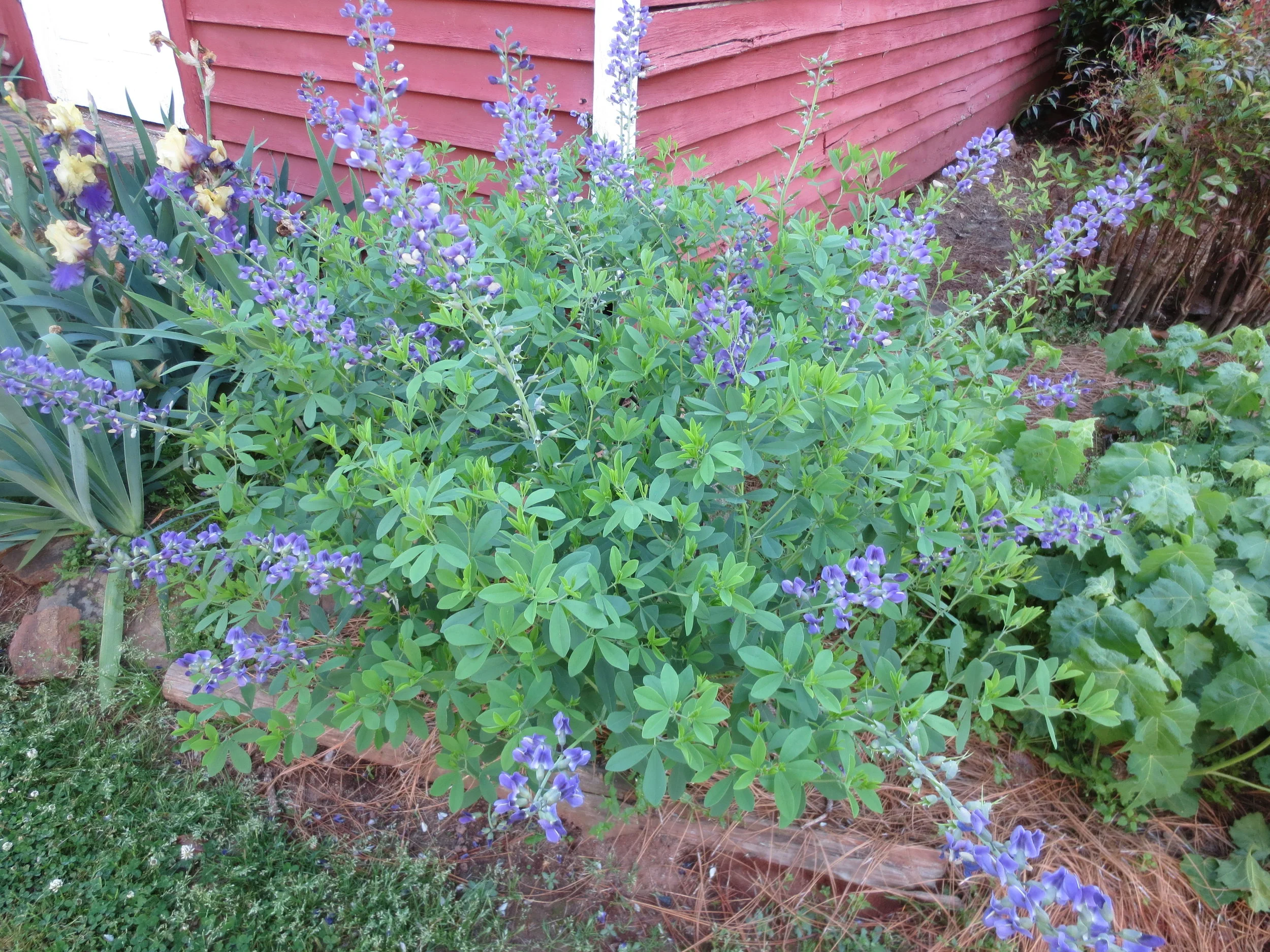“Common” names often cause confusion about plant identity. The spring-flowering groundcover at my childhood home was always called Thrift. It wasn’t until I started working at a garden nursery that I learned that its true identity was Phlox subulata, pronounced FLOCKS sub-yoo-LAH-tah. Then a customer asked for Thrift but meant Armeria, also known as Thrift. The two Thrifts are completely unrelated. Armeria juniperifolia (juniper-leaved thrift) and Armeria maritima (sea thrift) grow up to one foot tall. One has sharp foliage like a juniper while the other has grassy-like foliage. Both are perennial in zones 4-9, and are salt-tolerant. Their flowers remind me of Scabiosa. The focus of today’s blog is Phlox subulata, an old-fashioned southern standby.
Phlox subulata is also known as Creeping Phlox, Moss Phlox, Rock Phlox, and Thrift. This evergreen perennial reaches only six inches tall, at most. It forms a tight mat of needle-like foliage that works well as a groundcover and is frequently used in combination with large rocks. The flowers are small (3/4 inch across, with five petals) but so numerous that they conceal the leaves, appearing like a blanket of color. Thrift is blooming right now in my area, with showy mats of pink, rose, white, light blue, or lavender flowers. It is often used on steep banks or slopes, where it will self-seed and spread to cover uneven terrain and prevent erosion. Give Thrift full sun or part sun in acidic soil. It requires little maintenance beyond a little thinning if it becomes so congested that it starts choking itself.
Phlox subulata is native to the US and will grow in zones 3-9. It is rarely bothered by insects or diseases. Deer do not normally browse Thrift; the flowers are favored by hummingbirds, bees, and butterflies.
I planted a couple of these Phlox subulata under a new redbud (Cercis chinensis ‘Don Egolf’) last year. The color of the flowers is a near-match to the color of the tree’s blooms. They flower at the same time, and are neighbors to a yellow Forsythia, which provides a nice color contrast.
This thick mat of Thrift (Phlox subulata) has spread to replace grasses or weeds that might have grown under this fence, eliminating hand-weeding or string-trimming.














